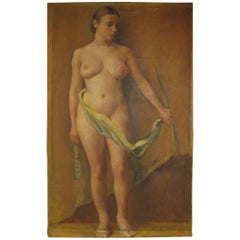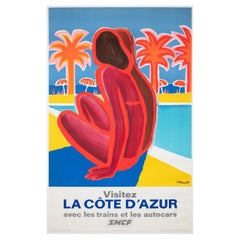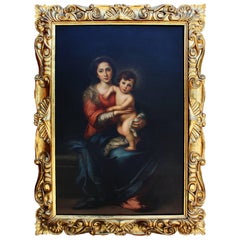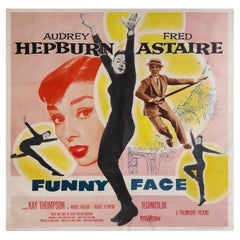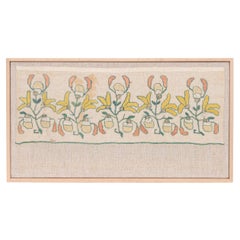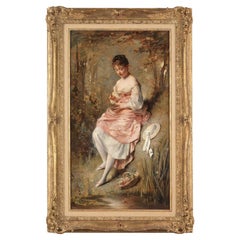Fabric Decorative Art
1950s American Vintage Fabric Decorative Art
Canvas
20th Century French Fabric Decorative Art
Linen, Paper
1910s Italian Baroque Vintage Fabric Decorative Art
Canvas, Giltwood
20th Century American Fabric Decorative Art
Linen, Paper
Early 20th Century Turkish Folk Art Fabric Decorative Art
Silk
19th Century French Rococo Revival Antique Fabric Decorative Art
Canvas, Giltwood
21st Century and Contemporary Turkish Mid-Century Modern Fabric Decorative Art
Wool, Cotton
1920s Chinese Vintage Fabric Decorative Art
Fabric, Silk
Late 20th Century Uzbek Suzani Fabric Decorative Art
Silk, Cotton
1970s Chinese Chinoiserie Vintage Fabric Decorative Art
Silk, Glass, Wood
Mid-19th Century Uzbek Suzani Antique Fabric Decorative Art
Silk
20th Century French Fabric Decorative Art
Linen, Paper
20th Century French Fabric Decorative Art
Linen, Paper
Early 20th Century Moroccan Suzani Fabric Decorative Art
Silk
1970s Spanish Modern Vintage Fabric Decorative Art
Stainless Steel
20th Century British Fabric Decorative Art
Linen, Paper
20th Century American Fabric Decorative Art
Linen, Paper
20th Century French Fabric Decorative Art
Linen, Paper
20th Century British Fabric Decorative Art
Linen, Paper
Early 20th Century Korean Art Deco Fabric Decorative Art
Silk
2010s Fabric Decorative Art
Wool
19th Century Chinese Ming Antique Fabric Decorative Art
Silk, Wood, Paint
2010s Uzbek Suzani Fabric Decorative Art
Cotton, Silk
15th Century and Earlier Peruvian Pre-Columbian Antique Fabric Decorative Art
Textile, Linen
20th Century Polish Fabric Decorative Art
Linen, Paper
2010s American Organic Modern Fabric Decorative Art
Metallic Thread
Early 20th Century Korean Art Deco Fabric Decorative Art
Silk
Late 20th Century Uzbek Suzani Fabric Decorative Art
Cotton, Silk
1970s American Mid-Century Modern Vintage Fabric Decorative Art
Textile, Wood
19th Century Uzbek Suzani Antique Fabric Decorative Art
Silk
20th Century Aesthetic Movement Fabric Decorative Art
Canvas, Wood
20th Century French Fabric Decorative Art
Linen, Paper
20th Century French Mid-Century Modern Fabric Decorative Art
Wool
Early 20th Century Uzbek Folk Art Fabric Decorative Art
Cotton
20th Century Peruvian Fabric Decorative Art
Linen, Paper
20th Century French Fabric Decorative Art
Canvas, Paint
2010s English Arts and Crafts Fabric Decorative Art
Silk
20th Century French Fabric Decorative Art
Linen, Paper
18th Century German Rococo Antique Fabric Decorative Art
Canvas
19th Century Uzbek Suzani Antique Fabric Decorative Art
Silk
2010s American Organic Modern Fabric Decorative Art
Ceramic, Cotton
Late 20th Century Unknown Country Fabric Decorative Art
Canvas
20th Century French Fabric Decorative Art
Linen, Paper
1980s American Other Vintage Fabric Decorative Art
Canvas, Giltwood
Late 19th Century Tajikistani Suzani Antique Fabric Decorative Art
Silk
1960s American Mid-Century Modern Vintage Fabric Decorative Art
Fabric, Felt, Wood
2010s American Organic Modern Fabric Decorative Art
Ceramic, Cotton
Mid-19th Century Chinese Qing Antique Fabric Decorative Art
Silk, Plexiglass
Early 20th Century Fabric Decorative Art
Silk
1970s French Mid-Century Modern Vintage Fabric Decorative Art
Aluminum
17th Century Belgian Antique Fabric Decorative Art
Wool, Silk, Paint
1860s English Victorian Antique Fabric Decorative Art
Giltwood, Canvas
Late 20th Century Fabric Decorative Art
Textile
Early 20th Century Korean Art Deco Fabric Decorative Art
Silk
Mid-19th Century Indian Folk Art Antique Fabric Decorative Art
Wool
Late 20th Century Balinese Fabric Decorative Art
Paint, Textile
2010s Fabric Decorative Art
Wool
Late 19th Century Indian Antique Fabric Decorative Art
Cotton
19th Century Italian Other Antique Fabric Decorative Art
Gesso, Canvas, Wood
Early 20th Century Moroccan Fabric Decorative Art
Silk
Read More
At Colonial Williamsburg, Everything Old Is New Again
With the help of a new director, the Virginia institution's folk art and decorative arts museums are undergoing extensive upgrades.
New York’s Hirschl & Adler Showcases the American Workmanship and Design Panache of Neoclassical Treasures
The gallery's latest exhibition proves that museum-quality pieces entice and inspire, whether in traditional or more modern interiors.
